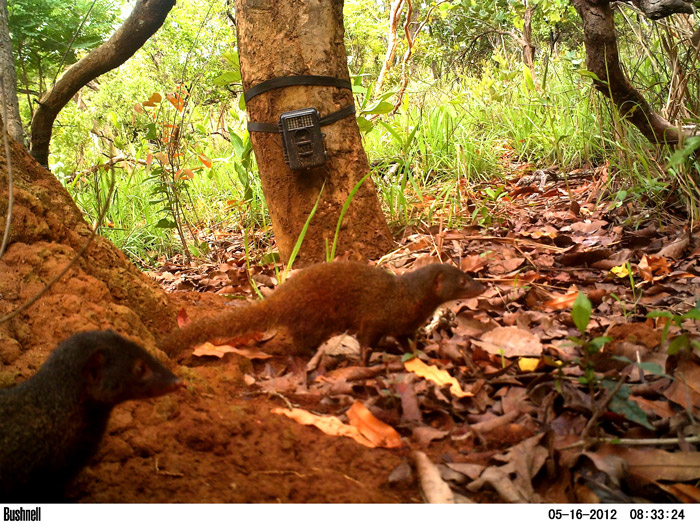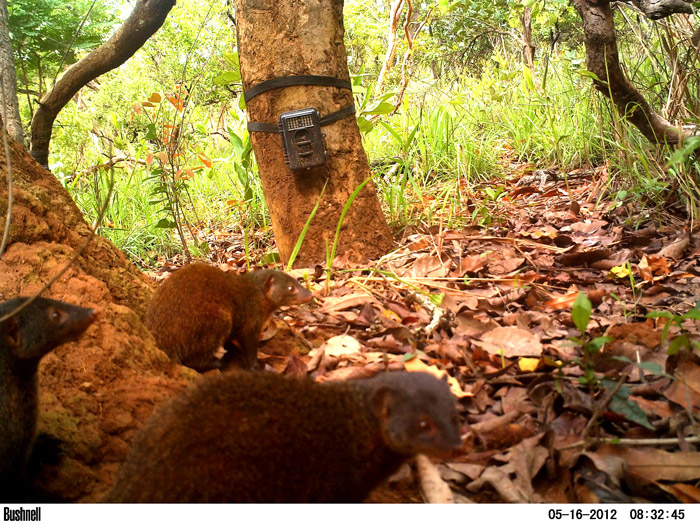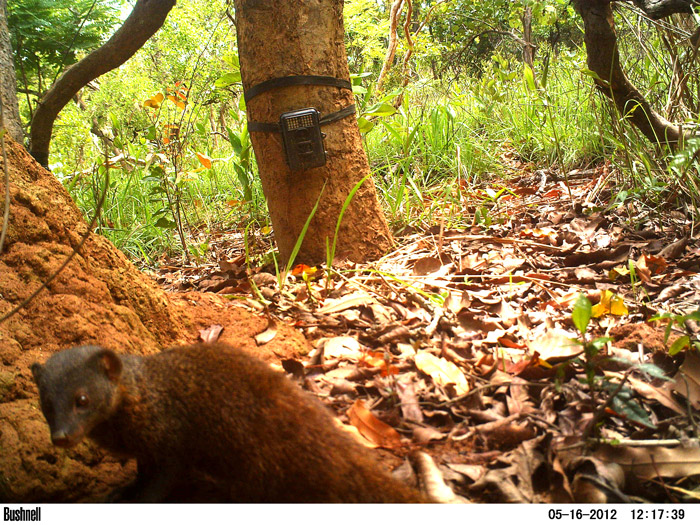With only 31 museum specimens and a handful of possible sightings over the last twenty years, the Pousargues’s or savanna mongoose (Dologale dybowskii) is one of the least known carnivores in the world. But now we can learn more about them. Written by: Thierry Aebischer & Raffael Hickisch

During our fieldwork between 2011 to 2015 in the southeastern part of the Central African Republic, we discovered a population of this forgotten dwarf mongoose in the Chinko Project Area, a conservation zone recently founded and now part of the African Parks network.
Before we started the first expedition, almost nothing was known about the wildlife in the eastern Central African Republic. We now have a better understanding of this small carnivore and its social structures thanks to direct field observations and strategically placed camera traps installed around termite mounds occupied by Pousargues’ mongoose. Astonishingly, the Pousargues’s mongoose shares its jungle home with eight different species of mongoose.
Observations from the Chinko show that Pousargues’s mongoose lives in small groups ranging from three to 12 individuals, which regularly move between their favourite termite mounds. Breeding has been observed taking place in mid-May during the early rainy season. A small group of three adults have been observed caring for an infant, carrying it around in their mouths. A first genetic survey based on collected scat samples shows the Pousargues’s mongoose being a close relative of the forest-dwelling Kusimanse crossarchus.


Based on more than 1,500km of walked transects, over 14,500 camera traps, days spent in more than 400 different locations and countless hours of field observations, Pousargues’ Mongoose seem to occur in much lower densities than most other mongoose in the Chinko Project Area. Habitat preferences and their ecological recommendations are still largely unknown, so further studies are needed. The vegetation is relatively pristine in eastern CAR, South Sudan and northern DRC due to less human interference in these areas. As such, it can be assumed that the habitat of Pousargues’s mongoose is still available at scale.
Poaching and overgrazing seriously threaten animals like lions, elephants, wild dogs and possibly this little mongoose in the Central African Republic. Therefore, managing large-scale reserves like the Chinko Project Area is important to secure a functional ecosystem and the long-term survival of a diverse wildlife community, including nondescript dwarfs like the Pousargues’s mongoose.
 DID YOU KNOW that African Parks offers safari camps (lodges and campsites) where 100% of tourism revenue goes to conservation and local communities? Find out more and book your African Parks safari.
DID YOU KNOW that African Parks offers safari camps (lodges and campsites) where 100% of tourism revenue goes to conservation and local communities? Find out more and book your African Parks safari.
To comment on this story: Login (or sign up) to our app here - it's a troll-free safe place 🙂.![]()






